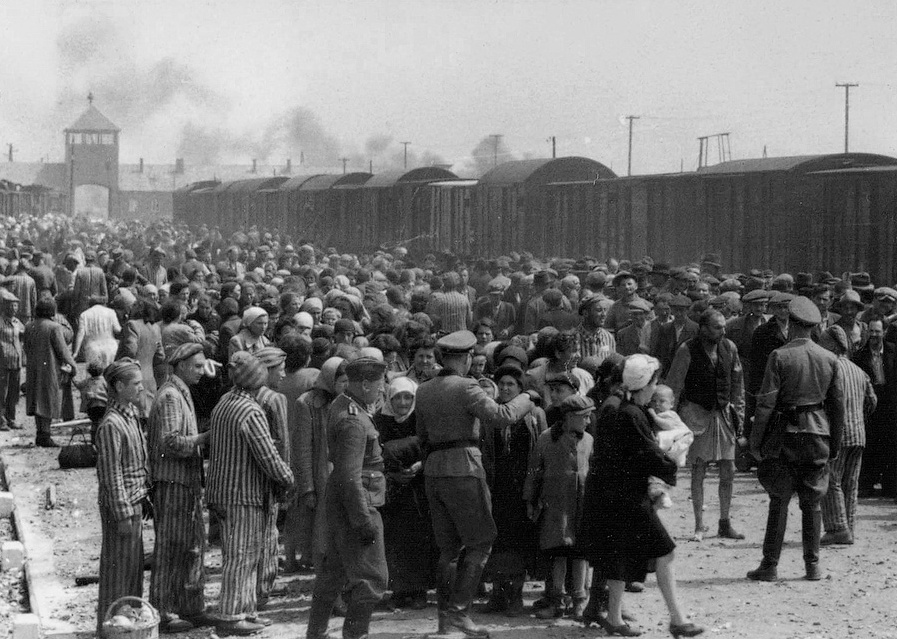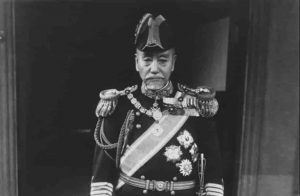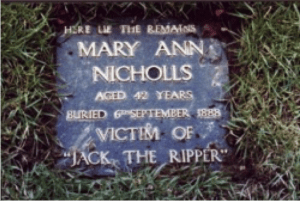Winner of the Fall 2019 StMU History Media Award for
Best Article in the Category of “World History”
In the evening of November 9, 1938, the state-sponsored pogrom on the German-Jewish community occurred throughout Germany that would subsequently be called Kristallnacht. It occurred under the orders of Reinhard Heydrich, the Chief of the Reich Security Main Office, and Heinrich Himmler, the Reichsfuhrer-SS. Heydrich called Gestapo chief Heinrich Muller and put all regional State Police across the Reich on full alert and prepared for the arrest of 20,000 to 30,000 Jews, particularly targeting wealthy Jews. Later that night, Nazi activists destroyed synagogues and Jewish shops throughout Germany. They stole their belongings and forced them out of their homes to abuse, humiliate, and in many cases, murder them.1 Over the next 48 hours, more than 1,000 synagogues were burned and 7,000 businesses were ransacked and windows broken. Some 30,000 Jewish men between the ages of sixteen and sixty were arrested and sent to newly expanded concentration camps. The police stood by as the violence—often committed by neighbors, not strangers—raged on. Firemen were instructed to ensure that the flames did not spread to adjacent Aryan property, but absolutely not to put out the fires at the synagogues. Thus, most of the synagogues left standing were small synagogues that were part of other buildings.2

In 1933, there were approximately 500,000 Jews in Germany; however, after Hitler came to power and became Chancellor of Germany, the discrimination and harassment of the Jews in Germany increased drastically. Throughout Germany, Jewish children were constantly met with hostility from their classmates or teachers with disparaging words scribbled on their school supplies. They were also insulted openly in school, and it even escalated to physical bullying. Jewish shops were vandalized by Nazi Stormtroopers (SA), who daubed paint over the shop windows with the words “Germans do not buy in Jewish shops,” and “The Jews are our misery,” among other such expressions of hate.3 Having harassed the Jews in a physical way, the Nazis turned to the law. On April 7, 1933, Hitler’s government passed its first pieces of anti-Semitic legislation. The Law for the Restoration of the Professional Civil Service called for state officials who were not of Aryan descent to be removed from their positions, and a similar law stated that non-Aryan lawyers were required to cease practicing law. At the end of April, a third law was announced that limited the number of Jewish students in state schools and universities.4 In September 1935, a set of laws called the Protection of German Blood and German Honor, also known as the Nuremberg Laws, was passed by the Reichstag and were promulgated at the annual Nazi Party rally in the Bavarian town of Nuremberg. The laws stated that marriage, as well as sexual relations between Jews and citizens of “German or kindred blood,” was prohibited. Only racially “pure” Germans were entitled to civil and political rights. Jews were reduced to the status of subjects of the state.5 Two basic categories were established by the middle of November 1935, stating that a Jew was anyone who descended from at least three Jewish grandparents. The Nazis considered a Jewish grandparent to be a full blooded Jew if he or she belonged to the Jewish religious community. Thus the Nazis determined race by the religious affiliation of grandparents.6 By the year 1938, only 185,000 Jews remained within Germany. In this first period of Nazi rule in Germany, from 1933 to 1939, their policy toward the Jews was one of harassment, so that Jews would leave Germany voluntarily. And that policy seemed to be working right up to the dawn of the Second World War.
On September 1, 1939, German troops invaded Poland from the west, and in just over two weeks, their ally, the Red Army of the Soviet Union, invaded Poland from the east. As the Wehrmacht crossed into Poland, Reinhard Heydrich arranged with the German Army High Command for more than 2,000 Einsatzgruppen to enter the country immediately behind the army. Heydrich’s orders were for the Einsatzgruppen to make sure that “the higher echelons of the Polish population [were] to be rendered as good as harmless.”7 This resulted in the deaths of about 16,000 Poles, which was a mix of the intelligentsia, Catholic priesthood, Jews, and anyone else they considered hostile. The atrocities committed by the Einsatzgruppen was so outrageous that even some members of the German army were appalled by their actions. However, all this brutality was only a prelude to the infamous Holocaust. Although several thousands of Jews were murdered, Hitler and the Nazi leadership were also targeting the leadership class within Poland, and the overarching German policy toward the Jews remained one of harassment, despite the fact that the Nazis now began to have Jews under its control in the millions, instead of the two hundred thousand they had a month earlier.8
The Einsatzgruppen were units formed by Heydrich under the order of Heinrich Himmler in 1939. The core of the units came from Heydrich’s Security Police (Gestapo and Kripo) as well as his intelligence apparatus, and they were supplied by small units of Waffen-SS, a military branch of Himmler’s SS.9 Their aim was to secure order through each phase of the Nazi empire’s expansion. However, the units underwent a critical change in Poland. Like the Gestapo, they had always used brutal but traditional policing techniques in Germany. But that policy changed in Poland. The security mind-set operating there had already lowered the threshold for violence.10 The invasion of Poland in 1939 brought more than a million Jews under the German’s control. Heydrich and the Nazi leaders were faced with a problem that they had not encountered before the war. How would they deal with so many more Jews with their policy of harassment? In fact, harassment was not even possible in Poland. There was nowhere for them to leave to. Therefore, Heydrich directed the Einsatzgruppen to begin to exterminate Jews throughout the former land of Poland, village by village. The Einsatzgruppen would show up in a town or village, march the Jews into the forest outside of town, sometimes to the edge of a gravel pit. The Jews would face a six-foot drop. Then the Einsatzgruppen would shoot their victims at their necks, and the victims would slump into the pit. The Einsatzgruppen took turns in this grizzly business of murder, in between drinking large quantities of liquor, so as to endure their ordeal of killing. They performed these acts of murder by the hundreds per day, regardless of sex and ages of their victims. The process would be repeated over and over again at the same place, until all Jews of the town or village had been thus liquidated. In this way, the Jews had to look down at the growing number of corpses in the pit who might have been their family or friends before being shot themselves.11 However, the daily shootings also took its toll on the Einsatzgruppen. Such daily acts of sheer murder became a traumatic activity for the members of the killing units, and created alcoholics among them, and many had nervous breakdowns as well. The mass killings of Jews in this way only escalated with the invasion of the Soviet Union in 1941, when the numbers of Jews under Nazi control again rose by millions. Himmler tasked Odilo Globocnik, the SS and Police leader in Lublin, to find a new method for the murder of the Jews that would be less disturbing and much less public. The alternative method was to lead to the deportation of Jews to extermination or death camps to be gassed. However, due to the long consolidation process caused by the ever increasing number of Jews and limited amount of man power, Globocnik finally lost patience and decided that mass execution through shooting would be a better alternative solution for the problem. Therefore, the Einsatzgruppen was tasked to do so and after months of killing, the groups finally evolved into mobile killing units.12

With Germany’s invasion of Poland in 1939, and subsequently of France, Denmark, Norway, and Greece in 1940, and then of the Soviet Union in 1941, approximately 15 million Jews fell under German control. Due to the extent of the very public mass murders of the Einsatzgruppen in Poland and then in the Soviet Union, a fear came to Heydrich’s mind, which was shared by many of his officers in the field. They believed that the children who survived the ordeal would someday seek revenge. Jewish women would bear more children, and the elderly would tell the tales of the murders of the Einsatzgruppen to future generations. Germany’s past misfortune could end only by means of a terrible final reckoning. Heydrich wanted to ensure that the next generations of Germans would no longer have to deal with any problems related to Jews or future “generations of avengers.” Heydrich left no documents or letters indicating that he felt moral ambiguity about his central role in the murderous escalation of anti-Jewish policies.13
The result of the increased violence was staggering. By the end of 1941, the Einsatzgruppen and their local helpers murdered between 500,000 to 800,000 Jewish men, women, and children in the former Polish and Soviet territories, most of the deaths as a result of shooting at close quarters. By the late summer of 1941, both Himmler and Heydrich became concerned that the face-to-face killings carried out by the Einsatzgruppen threatened the mental health of their men. Himmler worried that it would create sadistic, psychologically deranged killers that would threaten the safety of German society after the war.14 Perhaps there might be a less messy method of murder than the methods of the Einsatzgruppen, one that got the job done, without leaving so much evidence of mass murder lying in hundreds of forest clearings.
One of the earliest proposals for dealing with a less messy method came from Rolf Heinz Hoppner, a local official in the General Government of Poland. He proposed the use of gas to accelerate the murder of the Jews. Inspired by the suggestion, Heydrich instructed his officers to investigate the new means of mass murder. In late October 1941, the proposed solution was tested in the form of mobile gas vans at the Sachsenhausen concentration camp near Berlin. Heydrich considered this means of killing more humane, but the gas vans never caught on. The reason was that asphyxiation by carbon monoxide in medium-sized vans was too slow and ultimately no less disturbing than the Einsatzgruppen shootings. They had to wait for their screaming victims to die inside the vans, which took more than fifteen minutes, before they could remove the bodies from the vehicles. The Nazis then continued the search for more effective extermination methods, which led to experiments with a powerful chemical called Zyklon B in Auschwitz.15 However, that was not the first gas experiment conducted by the Nazis. Back in September 1939, Hitler had established a euthanasia program that played a significant role in the development of the Holocaust. Hitler authorized his personal physician, Karl Brandt, to kill those Germans who were mentally retarded, physically infirm, and chronically ill.16 On January 4, 1940, a gassing experiment was conducted in Brandenburg an der Havel at a prison that was converted into a unit for the euthanasia program. The victims were brought to a pretend shower room with fake water pipes along the ceiling where they were asked to undress, stating that they needed a shower. Once they were secured in the room, gas from bottles of carbon monoxide was released into the room and suffocated the victims. The bodies were then taken away to be burnt after the room was ventilated.17
Since the summer and autumn of 1941, the challenge to find a comprehensive solution to the Jewish question multiplied. Rumors about the atrocities that the Nazis were committing on the Jews in the east soon created anxiety for the Nazi leaders, and Heydrich was forced to urge his men to operate with greater caution and secrecy in their tasks. Heydrich proposed to remove the Jews completely from German-occupied Europe, but the propsal was rejected by Hitler at first, due to the importance of public opinion; however, it was later adopted due to Hitler’s fear of the “Jewish World Conspiracy” after the ever increasing number of Jews that came under German control.18 The deportation of Jews towards the gassing facilities was considered a temporary solution and the gassing or shooting of the Jews in Poland had yet to solve the Jewish question for the millions of Jews throughout Europe. For the purpose of dealing with the magnitude of the problem, Heydrich organized a conference, the Wannsee Conference, which was to be held in a villa on the shores of Berlin’s Lake Wannsee. The meeting was supposed to be held on December 9, 1941, but was postponed to January 20, 1942, due to Germany’s declaration of war on the United States.19 Most of the attendees that Heydrich invited were important and well-educated men, many of whom had equivalent status to Heydrich.20 Heydrich hoped to achieve three goals at the meeting. First, he sought official endorsement from the civil authorities present for the meeting for the deportation process of all Jews throughout Europe, to be rounded up and transported by train in railcars to four main death camps in Poland. This was the planned comprehensive solution to the Jewish question. Second, he wanted to emphasize his sole responsibility for the solution of the Jewish Question against the resistance from civilian authorities, mainly from Wilhelm Stuckart of the Interior Ministry. This would enabled him to establish programs without the interference of the authorities who wanted to protect their waning influence from further invasion of the Reich Main Security Office, an organization established by Himmler. Third, he wanted to reach a consensus with the group of people that would be involved in the deportation process, to establish an understanding that half-Jews (Mischlinge) be deported along with full-Jews (Geltungsjuden).21 If these three goals were achieved, it would mean the annihilation of millions of Jews.

The meeting fulfilled the first and second goal and affirmed Heydrich’s overall authority in relation to the Final Solution. However, even with the absence of Hitler, no one, not even Heydrich, had the authority to set these decisions in motion without Hitler’s direct approval. However, there would never be any proof that Hitler gave that approval. Hitler certainly didn’t sign any documents relating to the Final Solution. But that was typical of Hitler’s leadership style, to never leave a paper trail leading back to him. All Hitler had to do was to simply give a nod, and that would have been sufficient to set the Final Solution into motion. The discussion at Wannsee testified to the gradually increasing radicalism with which the central authorities of Nazi Germany viewed the Jewish Question. Hitler’s ultimate approval turned the year 1942 into the most horrifying year of systematic mass killings in the history of humankind, and thus, marked the high water mark of the Holocaust.22
- Robert Gerwarth, Hitler’s Hangman: The Life of Heydrich (Yale University Press, 2012), 127-128. ↵
- Encyclopedia Judaica, 2nd ed, 2007, s.v. “Holocaust: The Events.” ↵
- Laurence Rees, The Holocaust: A New History (New York: Public Affairs, 2017), 60. ↵
- Laurence Rees, The Holocaust: A New History (New York: Public Affairs, 2017), 61. ↵
- Encyclopedia Judaica, 2nd ed, 2007, s.v. “Holocaust: The Events.” ↵
- Laurence Rees, The Holocaust: A New History (New York: Public Affairs, 2017), 90-91. ↵
- Laurence Rees, The Holocaust: A New History (New York: Public Affairs, 2017), 151-152. ↵
- Laurence Rees, The Holocaust: A New History (New York: Public Affairs, 2017), 152-153. ↵
- Christopher R. Browning, Ordinary Men: Reserve Police Battalion 101 and the Final Solution in Poland (Harper Perennial, April 24, 1998), 9. ↵
- Europe Since 1914: Encyclopedia of the Age of War and Reconstruction Vol. 2, 2006, s.v. “Einsatzgruppen.” ↵
- Christopher R. Browning, Ordinary Men: Reserve Police Battalion 101 and the Final Solution in Poland (Harper Perennial, April 24, 1998), 99-100. ↵
- Christopher R. Browning, Ordinary Men: Reserve Police Battalion 101 and the Final Solution in Poland (Harper Perennial, April 24, 1998), 49-50, 54. ↵
- Robert Gerwarth, Hitler’s Hangman: The Life of Heydrich (Yale University Press, 2012), 198. ↵
- Robert Gerwarth, Hitler’s Hangman: The Life of Heydrich (Yale University Press, 2012), 199. ↵
- Robert Gerwarth, Hitler’s Hangman: The Life of Heydrich (Yale University Press, 2012), 200. ↵
- Encyclopedia Judaica, 2nd ed, 2007, s.v. “Holocaust: The Events.” ↵
- Laurence Rees, The Holocaust: A New History (New York: Public Affairs, 2017), 166. ↵
- Robert Gerwarth, Hitler’s Hangman: The Life of Heydrich (Yale University Press, 2012), 201-202. ↵
- Robert Gerwarth, Hitler’s Hangman: The Life of Heydrich (Yale University Press, 2012), 209. ↵
- Robert Gerwarth, Hitler’s Hangman: The Life of Heydrich (Yale University Press, 2012), 210. ↵
- Robert Gerwarth, Hitler’s Hangman: The Life of Heydrich (Yale University Press, 2012), 216. ↵
- Robert Gerwarth, Hitler’s Hangman: The Life of Heydrich (Yale University Press, 2012), 217. ↵




66 comments
Sara Guerrero
Reading about the Holocaust and how the Jews were discriminated and mistreated still conveys some type of emotion. It shows the injustice that many Jewish individuals had to endure and probably one of the most horrific things to happen in the world. Many jews were stripped from everything they owned and forcefully sent to concetration camps where many would die. This article was well-researched and I think that the author did an excellent job decribing the storyline of this event.
Davis Nickle
The fact that these actions occurred against our fellow humans is probably one of the most abhorrent realities a person will ever have to accept. It really boggles the mind to think how bad the Jewish people really had it, and it is even harder to try and understand how anyone could try and justify these actions,let alone actually committing these atrocities. As depressing as this article is it was very informative.
Ana Cravioto Herrero
Very interesting article. As awful and disturbing i is to read about the holocaust, I think it is very important and something everyone should do so that the past will not be repeated. Although I do not think nothing will ever compare to the holocaust, I think it is still something we should obviously learn from, especially because this did not happen that long ago.
Arsema Abera
Whenever I think of WWII especially the holocaust my skin begins to crawl. How can one man annihilate let along think of killing 6 million people? and what I can’t stop asking my self is why? why murder and discriminate so many innocent people. This article was really sad and it was hard to imagine what the Jewish people were going through. It’s tragic but the use of learning history is to not repeat the harsh crimes that had been committed and live a peaceful life with no injustice and discrimination.
Ana Jimenez
Reading about the history of World War II, especially going in deeper into the European side of history always fascinates me. While this is extremely saddening, it intrigues me how the mind of Nazi worked and why they would do the things they did. It’s interesting the mechanics that went into it and what made someone a full-blooded Jew and a half Jew and thats how they decided they would die. Interesting article, great read for those interested in learning more than just the surface of World War II.
Samuel Vega
This was every informative article and made me question some things. As a society we still struggle with the enormity of the hatred that existed against the Jewish people. How could hate for a group of people be justified? The crimes against humanity are atrocious. Yet, we still see hatred today – not on this mass scale; but it is still there. What do we need to do as a society to make sure this despicable portion of our history never repeats itself?
Carlos Apodaca
The holocaust is an event in history that is sad to read about and having to read about what people had to endure during those years. Its crazy to think that people really belived in this idea and that it wasnt just Hitler that was sort of the mastermind behind it. I never really looked into how the events unfolded or what led up to it prior to the Holocaust but after reading this article its shocking to see what led to one of the worst genocides in human history and this article did a great job in explaning what went down.
Hali Garcia
The Holocaust is truly horrific and it is hard to believe that someone could think that it was something that needed to be done. When I hear about the Holocaust, I only think about Hitler so it is very scary to learn that there were other people who had started this. It is sickening to hear how they would practically wipe out people without much though all to keep them “pure.” Great article!!!
Vanessa Barron Ortiz
This article was great in clearly showing the systematic genocide of Jews in Europe Its baffling to how so many people were killed and the government did nothing to stop the killing of these poor innocent people I was surprised that they when for the rich Jews first because they “were taking their jobs” and their defense was that they wanted to ” Protect the German Bood/ German Honor”
Berenice Alvarado
I have always been really interesting interested in Holocaust, how someone could be unsympathetic towards other people. I honestly never knew how things escalated and how this event which was marked as the worst year of the history of human-kind. I really can’t believe that it wasn’t only Hitler that had this horrifying idea but that there was also other people with worst ideas. I really enjoyed reading this article.